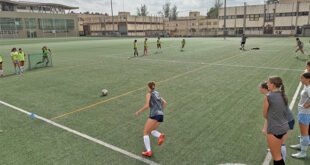“Full-on brain shut down”
Three endurance bike riders from the Gunnison Valley partook in the mother of all endurance bike races, the Tour Divide, in June. Nineteen days later, one had to drop out with health issues while two others made it the distance to finish in the top 10. Jarral Ryter from Gunnison finished on June 26 in sixth place after 18 and a half days in and out of the saddle. Eszter Horanyi won the women’s title coming in seventh place overall after riding for 19 days, three and a half hours shattering the women’s record by five days.
The Tour Divide is a self-supported bike race from Banff, Alberta to Antelope Wells, New Mexico on the Mexican border. Once the course leaves Canada, it follows the Great Divide Mountain Bike route in the United States from Montana, through Wyoming, Colorado and into New Mexico. The course is a total of 2,745 miles long with over 200,000 feet of climbing.
It was Horanyi’s first attempt at the Tour Divide though she’s no stranger to long bike races. She won and set a new women’s record at the Arrowhead Ultra, a 135-mile snow bike race in Minnesota, and has two titles and the women’s record time in the Colorado Trail Race. With those done and won, it was time to look for something longer.
“The longer the better,” says Horanyi. “It was a natural progression from the Colorado Trail Race. Bigger, longer, harder and the ultimate test for bike-packing racing.”
It’s been known to put a serious beat down on participants. The numerous passes along the way are oftentimes still under snow and participants are dealt the full gamut of weather.
To retain some sanity when facing the impending task of riding so far, Horanyi maintained a short-term goal mentality.
“I decided to just take it day-by-day,” explains Horanyi. “If I started out saying I’m going to Mexico I would panic. It wasn’t just trying to get to Antelope Wells. There were all these midpoint places I wanted to see. Whenever I would get close to those, I get an extra boost of motivation.”
She did put together a plan for time management. Horanyi set a goal to ride 15-16 hours a day and sleep 5-6 hours a night leaving some time to set up and break down camp and eat.
Though she had to tweak the schedule in Montana.
“I ended up sleeping a lot less in Montana because I was scared of the bears,” says Horanyi.
While the lower 48 portion of the course saw a mild winter this year, the Canada section was inundated with a record snow year this past winter giving riders an initial four-day gut check.
“The first four days we pushed over five or six big, snowy passes,” says Horanyi.
At the end of the sixth day, Horanyi considered dropping out as the miles of all of that pushing through snow took an enormous physical toll on her with both ankles and one wrist in severe pain.
“I was taking pain killers at an unsustainable rate,” says Horanyi.
She lay down in a hotel bed and thought to herself, if she wasn’t better by morning, she was out.
Remarkably, it took that one night to recover and Horanyi was back on course the next day bound for her next mini-goal and ultimately, Antelope Wells.
“The body is an amazing thing,” says Horanyi. “The power of a hotel room does a lot.”
Horanyi’s nutritional plan was based on one good meal a day fortified by snacking while riding including putting down at least 20 bags of Swedish Fish by the end of the race.
“Fried chicken and McDonalds were my standard,” says Horanyi. “When I got to a town and saw the golden arches, I got excited. It was not an all-natural organic affair.”
Horanyi’s McDonald’s stop consisted of a quarter-pounder with bacon and cheese, 10-piece chicken McNuggets, large fries and a large soda.
“I would down that pretty easily,” says Horanyi.
She hit a sleeplessness wall in Colorado.
“Through Colorado I started falling asleep on my bike,” says Horanyi. “Full on brain shutting down.”
The highlights for Horanyi came everyday as she started out riding and when she was finishing up riding.
“All of my sunrises and sunsets were in beautiful places,” says Horanyi.
Her biggest surprises came from herself and the people she saw along the way.
“What surprised me the most was the healing power of the human body,” explains Horanyi. “I think any doctor would have said to rest after those first six days but I just kept feeling better as I rode. And the kindness of people out there really blew me away. I was really touched by the caring of people. I wasn’t allowed to take any water or supplies from people but I’d be out in the middle of nowhere and they just wanted to know if I was doing okay.”
One single highlight does stick out from the 19-day ride.
“Pie Town, New Mexico,” says Horanyi. “Everyone that’s done the race talks about the pie. I was looking forward to a slice of key lime pie.”
Horanyi averaged 143 miles of riding per day with 186 miles her biggest day and 96 miles her shortest. She says she doesn’t feel as bad as she thought she would after the race and believes she can take as much as two days off her time if she does the race again.
“I finished and now I know I can go faster,” says Horanyi. “I think 17 days is possible.”
 The Crested Butte News Serving the Gunnison Valley since 1999
The Crested Butte News Serving the Gunnison Valley since 1999


